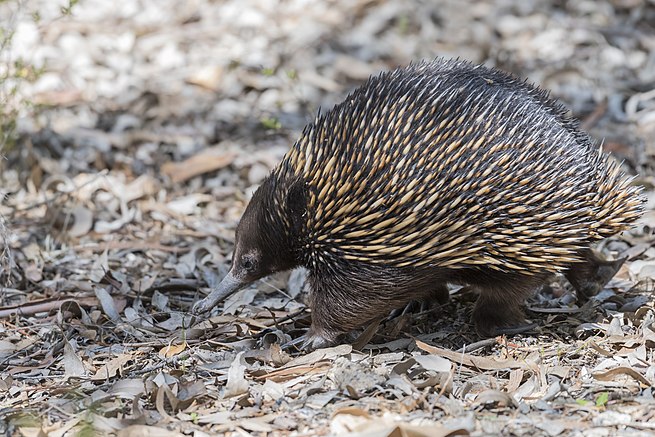
Main Difference
The main difference between Echidna and Porcupine is that the Echidna is a family of mammals and Porcupine is a rodent with a coat of sharp spines
-
Echidna
Echidnas (), sometimes known as spiny anteaters, belong to the family Tachyglossidae in the monotreme order of egg-laying mammals. The four extant species of Echidnas and the platypus are the only living mammals that lay eggs and the only surviving members of the order Monotremata. The diet of some species consists of ants and termites, but they are not closely related to the true anteaters of the Americas, which are xenarthrans, along with sloths and armadillos. Echidnas live in Australia and New Guinea.
Echidnas evolved between 20 and 50 million years ago, descending from a platypus-like monotreme. This ancestor was aquatic, but echidnas adapted to life on land.
-
Porcupine
Porcupines are rodents with a coat of sharp spines, or quills, that protect against predators. The term covers two families of animals, the Old World porcupines of family Hystricidae, and the New World porcupines of family Erethizontidae. Both families belong to the infraorder Hystricognathi within the profoundly diverse order Rodentia and display superficially similar coats of quills: despite this, the two groups are distinct from each other and are not closely related to each other within the Hystricognathi.
The Old World porcupines live in southern Europe, Asia (western and southern), and most of Africa. They are large, terrestrial, and strictly nocturnal. In taxonomic terms, they form the family Hystricidae.
The New World porcupines are indigenous to North America and northern South America. They live in wooded areas and can climb trees, where some species spend their entire lives. They are less strictly nocturnal than their Old World relatives, and generally smaller. In taxonomic terms, they form the family Erethizontidae.
Most porcupines are about 60–90 cm (25–36 in) long, with an 20–25 cm (8–10 in) long tail. Weighing 5–16 kg (12–35 lb), they are rounded, large, and slow, and use aposematic strategy of defense. Porcupines occur in various shades of brown, gray, and white. Porcupines’ spiny protection resembles that of the unrelated erinaceomorph hedgehogs and Australian monotreme echidnas.
-
Echidna (noun)
Any of the species of small spined monotremes in family Tachyglossidae, the four extant species of which are found in Australia and southern New Guinea.
-
Porcupine (noun)
Any of several families Hystricidae (Old World porcupines) or Erethizontidae (New World porcupines), both from the infraorder Hystricognathi, noted for their sharp spines or quills, which are raised when the animal is attacked or surprised.
-
Echidna (noun)
a spiny insectivorous egg-laying mammal with a long snout and claws, native to Australia and New Guinea.
-
Porcupine (noun)
a large rodent with defensive spines or quills on the body and tail.
